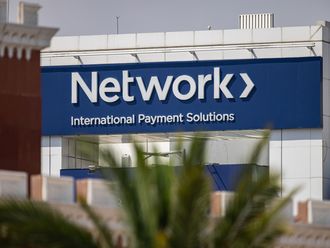LONDON: Barclays on Thursday reported a forecast-beating bounce in third-quarter profits to £1.7 billion ($2.08 billion), benefiting like its US rivals from a bumper quarter for its investment banking business.
The stronger performance from Barclays’ investment bank provides an early endorsement of Chief Executive Jes Staley’s restructuring plan, and is likely to quieten calls for Barclays to divest the business entirely and focus on simpler retail and commercial activities.
Staley has committed to growing the investment banking business because he believes it offers ‘counter-cyclical’ earnings potential compared with corporate and retail banking.
“What we have seen post the Brexit vote with the volatility in the market is confirmation that diversification brings benefits,” Staley told reporters on a conference call.
Morgan Stanley and Goldman Sachs both reported a rise in third-quarter profits of more than 50 per cent, largely from the surge in bond trading as investors fret over monetary policy around the world.
Barclays group pretax profit for the three months to the end of September, excluding notable items, was up from £1.4 billion a year ago, above the average forecast of £1.3 billion from analysts polled by the company.
Market volatility caused by uncertainty over interest rates and Brexit helped to boost trading income in the investment bank by 40 per cent versus a year ago, driven by stronger returns from bonds, commodities and currencies trading in particular.
The corporate and investment bank’s trading division posted income of £1.4 billion for the quarter, up from £1 billion in the same period a year ago.
Barclays also benefited from earning the majority of its investment banking revenues in the United States, since the dollar has appreciated in value against the British pound in the aftermath of Britain’s vote to leave the European Union.
Barclays shares were up nearly 1.5 per cent by 0847 GMT, the strongest performer in the benchmark FTSE 100 index.
Capital concerns
Barclays’ common equity tier one capital ratio was unchanged at 11.6 per cent, a source of concern for investors and analysts who point to stronger capital positions among the lender’s peers.
“The bank still isn’t out of a capital problem,” Chirantan Barua of Bernstein said in a note published after the earnings.
But Barclays said it was on track to close its non-core unit in 2017, which houses assets earmarked for disposal and which has acted as a drag on its capital position as the bank sells those unwanted assets.
Completing the sale of its stake in Barclays Africa is expected to help the bank to reach a core capital ratio target of 12.5 per cent but the bank offered no detailed update on progress since selling 12 per cent of its holding in Barclays Africa in May.
Barclays’ results were also marred by a 42 per cent spike in credit impairment charges, which the bank attributed to a change in the way it models credit card risk in the US and Britain.
It also booked a fresh £600 million charge for mis-selling payment protection insurance (PPI). The scandal has collectively cost major British banks more than £30 billion to cover victims’ claims.










